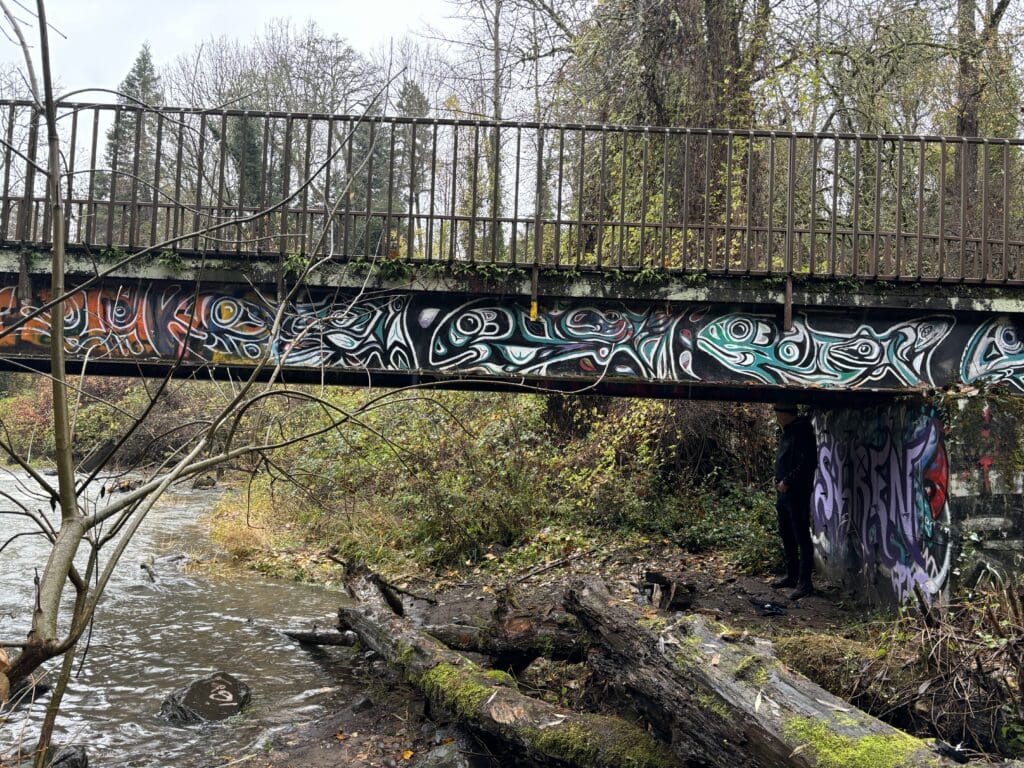“The old world is dying and the new world struggles to be born. Now is the time of monsters.”
– Antonio Gramsci
This overwhelm we’re all feeling? It’s by design. The intended impacts of the new administration’s policy blitz are both the emotional toll (outrage, despair, etc.) and the material harm (keeping people in fight or flight mode, fearing for their safety, jobs, access to housing and healthcare, and more).
Amid alarming text messages from schools, empty store shelves, ominous headlines, and panicked social posts from friends and colleagues, it’s hard to think clearly, and harder even to formulate a forward-looking strategy.
There is no question that we need to defend against attacks on basic rights and services, but we can’t spend all our time in rapid response mode. While the current president won the election on a wave of grievance, the kind of change our communities deserve won’t be powered by fear and anger, however justified.
As Michael McAfee wrote last year, the framework we need to build a Democracy that works for everyone is love. Love is the most generative force there is, and it’s also the best antidote to despair.
Countering harm with love
Frontline partners remind us every day that government hostility is nothing new in the United States. Many Black and Brown communities have survived generations of financial, infrastructural, and legal violence. They haven’t let that stop them from dreaming and building better futures, and neither will we.

When I look around our network, it’s striking that groups rooted in communities that have endured the most harm often have the most audacious visions for joy, love, and abundance, and the strongest practices to nurture care and connection. Perhaps it’s because that’s what’s required to do life-giving work against all odds, or, as Julian Brave Noisecat wrote at the peak of the COVID crisis, to survive the apocalypse and keep dreaming.
Our hearts hurt right now, but we can’t afford to turn away and shut down, and we can’t let the opposition’s “distract and divide tactics” drain our creative energy. Systems, structures, and beliefs are shaped by people and can be reshaped in service of justice. Indeed, there are leaders all over the country stepping up to protect kids, prevent hunger, expand access to affordable housing, ensure livable wages, and more.
While pundits have different takes on the election, there is broad agreement that voters were rejecting the status quo. They cast their ballots for a bold vision — even one built on false promises. Can we use the next few years to develop a vision for justice and resilience that inspires and activates people while resisting rollbacks?
Bridging political divides
Water is a natural connector. It flows across state and national boundaries. It ties us to neighbors up and downstream. It connects our health to that of the lakes, rivers, and wetlands that supply the stuff we drink and keep us safe from flooding.
It’s something people across the political spectrum care about. Voters approved measures in November to fund safe drinking water, restore coastlines, and conserve farmland and forests. Now, as the feds strip vital programs and protections, states are stepping up to protect clean water, prevent flooding, and keep people safe from storms.
We all have an intimate relationship with water, from the first cup of tea or coffee in the morning, to cleaning hands and surfaces, watering beloved gardens, and bathing our babies. Because it sits so close to home and heart, water can bridge divides and bring us together.
Similarly, while the issue of climate change has been politicized, the need to keep our communities safe from stronger storms, deadly heat, and brutal cold is something we can all agree on.
To tap into these areas of alignment and build the will for action, we have to be proactively seeding a vision for progress, even now. Especially now.
The best counter to doomism and dog whistles is to keep painting a picture of thriving communities that shows how true wealth flows from regenerative, reparative economies, versus extraction that externalizes harm.
As we look ahead to 2025 priorities for the Water Hub, we are thinking both short and long-term. We want to equip advocates to manage mis- and disinformation, tap into nonpartisan concerns, and make the most of limited communications capacity. Stay tuned for a series of tools and trainings designed to help organizations navigate the new political reality and changing media landscape.
Long–term, we are excited to work with partners across the movement on a narrative and creative strategy that will help galvanize support for the projects and policies our communities need while seeding constructive hope and care.
Further reading
Here are some of the articles and resources that are inspiring us and informing our work:
- Lightbox Collaborative Rapid Response Guide
- Resource Media on how framing and cue or avert partisan divides
- Vu Le from Nonprofit AF on the new world that’s on her way
- Cassie Robinson and Sophia Parker of Joseph Rowntree Foundation in SSIR on how this time can be both destructive and generative
- Demos’ excellent Race Class Narrative Guide
- Heather McGhee on how we can fight the Right’s narrative dominance
What's next?
Sign up for our Water Cooler newsletter to hear about our trainings and resources and follow us on LinkedIn, Bluesky, and Instagram.